|
|
 Introduction Exhibition Introduction Exhibition
| A photograph of Yamanashi taken from an altitude of 800km, surrounded by a three-dimensional panel built to help you understand the geographical features of Yamanashi Prefecture. |
|
|
 Main Exhibition “Nature and People in Yamanashi Main Exhibition “Nature and People in Yamanashi
| The connection between Yamanashi’s environment and her people is introduced through 19 different themes, exhibited with dioramas, videos, and information technology devices to promote better understanding. |
|
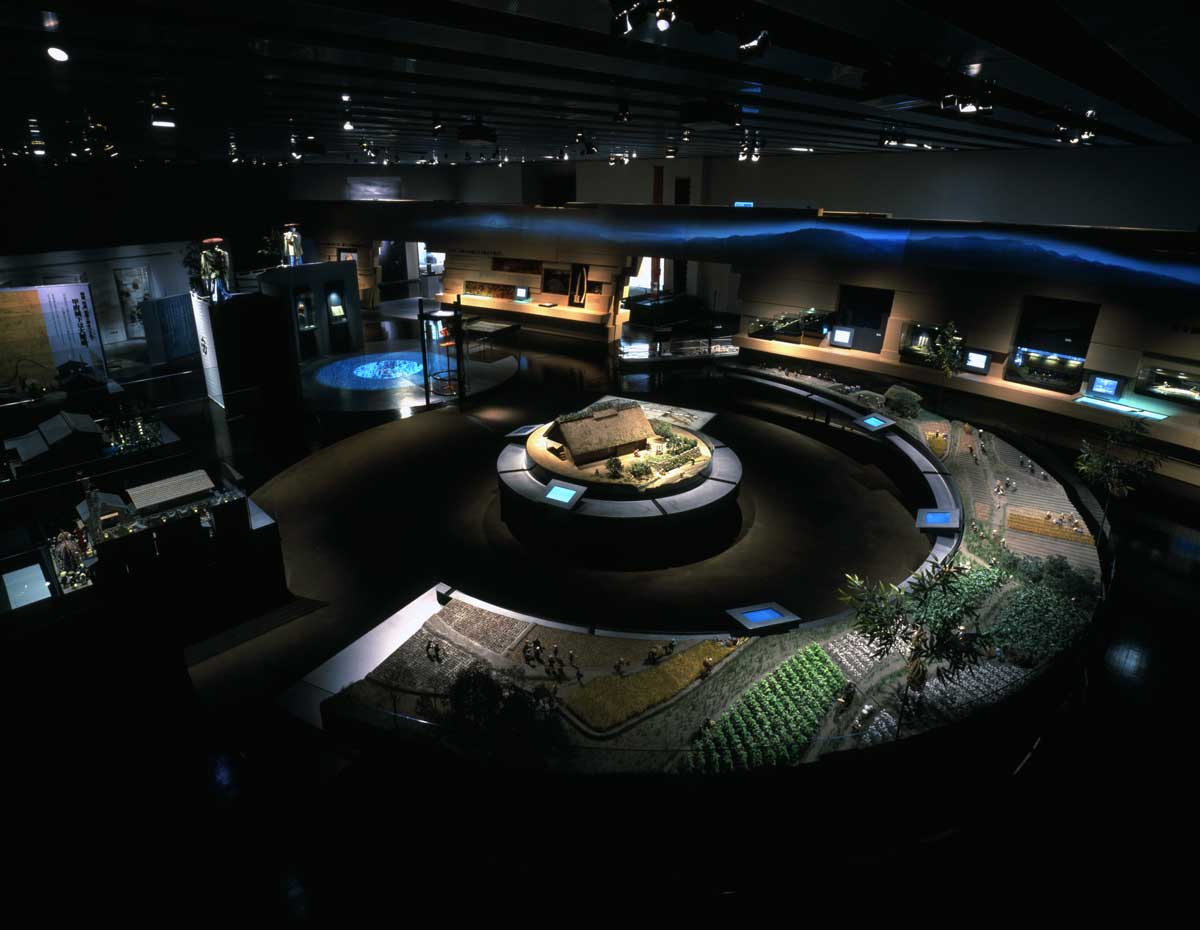 |
| |
|
 Experience-Yamanashi-History Zone Experience-Yamanashi-History Zone
| You can actually experience many things such as living, learning, playing, and traveling with the Edo Period as the main focus. |
|
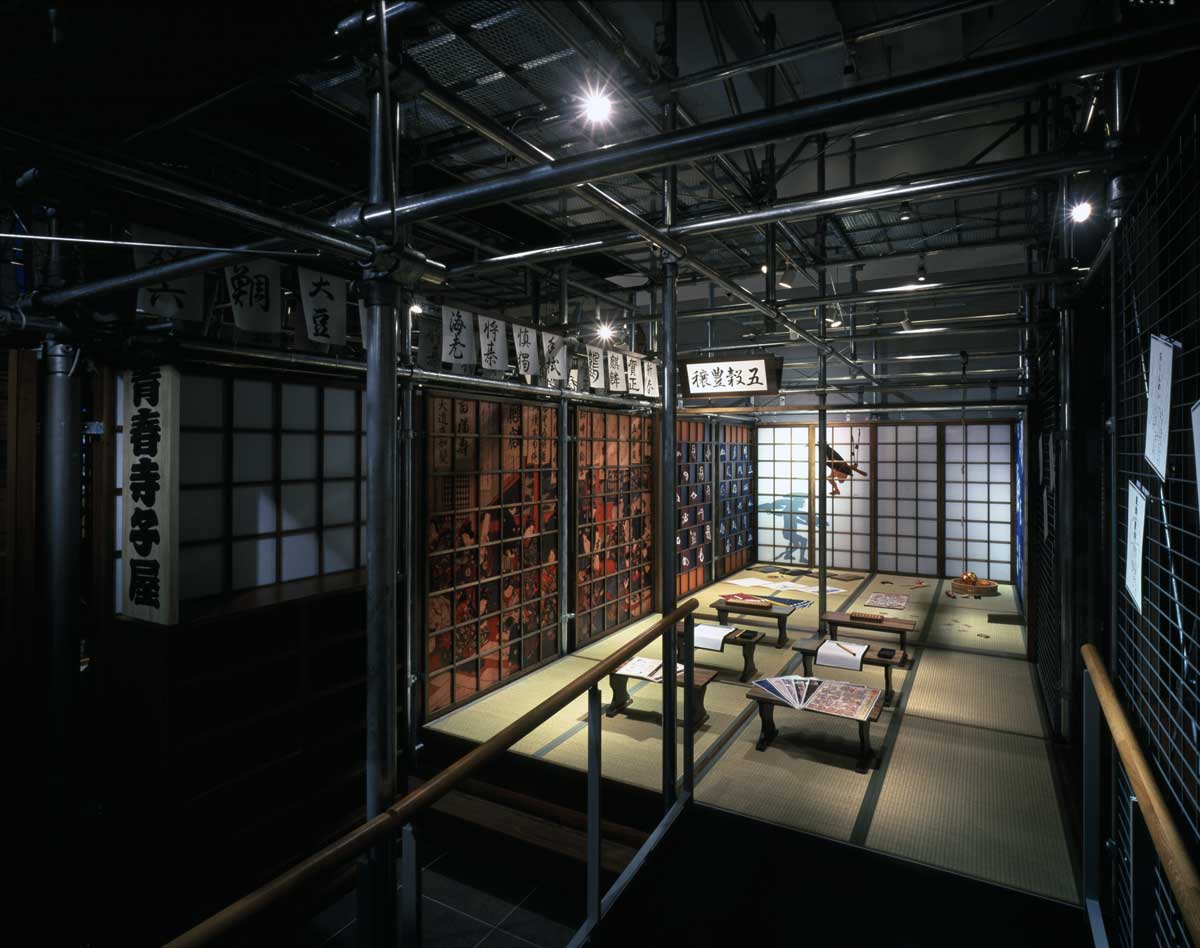 |
| |
|
| |
|
|
|
|
|
 |
| |
◆ |
| |
 Finished Special Exhibitions Finished Special Exhibitions |
 Special Exhibition Special Exhibition
Animails, Animals, Animals!
|
| From ukiyo-e prints depicting joyful human-animal interactions to stunning kimonos alive with animal motifs, this exhibition immerses you in the endearing bond between humans and animals. Explore paintings, household items, toys and many more items that celebrate this connection, featuring works from the Edo-Tokyo Museum’s collection alongside unique local pieces from the Yamanashi Prefectural Museum. |
 |
| July 13, 2024(Sat)-September 2, 2024(Mon) |
| |
◆ |
| |
 Finished Special Exhibitions Finished Special Exhibitions |
 Special Exhibition Special Exhibition
Masterpieces of Buddhist Statue in Nara
Pilgtimages to the Ancient Temples
|
| Standing along ancient pilgrimage routes, serene Buddhist statues have captivated hearts for centuries. From revered writer Tetsur Watsuji, whose "Pilgrimages to the Ancient Temples in Nara resonated deeply with many fellow litterateurs, to modern-day admirers, these figures inspire awe and fascination. This exhibition unveils the captivating stories and rich history embedded within these iconic statues and paintings. Don't miss this opportunity to encounter some of Japan's most representative expressions of Buddhist art. |
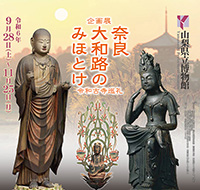 |
September 28, 2024(Sat)-November 25, 2024(Mon) |
| |
◆ |
| |
 Upcoming Special Exhibitions Upcoming Special Exhibitions |
 Special Exhibition Special Exhibition
TAKEDA Katsuyori - The Great Samurai General in Japan |
| Recent reevaluations shed new light on Takeda Katsuyori (1546-82), the successor to the famed Takeda Shingen. This exhibition delves into Katsuyori’s life and legacy, examining pertinent materials associated with the pivotal Battle of Nagashino and his intended new residence, Shinpu Castle. Through these artifacts and documents, we take a closer look at the man himself. |
coming soon... |
March 15, 2025(Sat)-May 6, 2025(Tue) |
| |
|
| |
 Past Special Exhibitions Past Special Exhibitions |
| |
Go to top |
|
|
|
 |
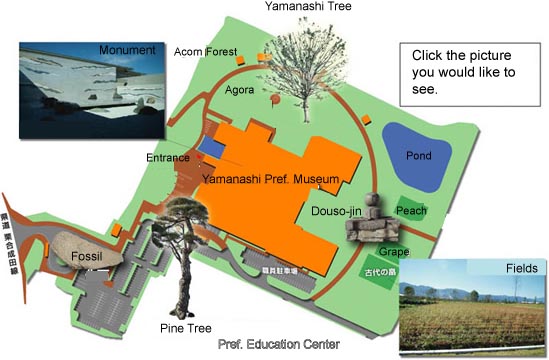
|
| |
| |
|
|
 Fossil from Minobu Town Fossil from Minobu Town |
| |
|
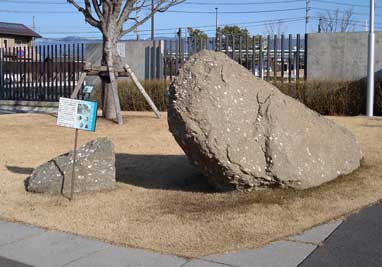 |
|
| Fossil of shells buried in sandstone collected from outcrop in Minobu town which accumulated 7,000,000 years ago, when Yamanashi was at the bottom of the sea. |
|
| |
|
| |
|
|
 Pine tree from Kajikazawa-kashi (river port) Pine tree from Kajikazawa-kashi (river port) |
| |
|
|
|
|
This pine tree was transplanted from Kajikazawa-kashi, a prosperous river port of the water transportation using the Fuji River.
|
|
| |
|
| |
|
|
 Yohaku no Daiza (Pedestal of Margin) Yohaku no Daiza (Pedestal of Margin) |
| |
|
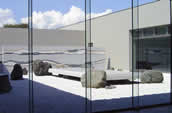 |
|
|
This monument is placed in the inner court facing the main entrance. It was designed by Takao Sekine. Large granite stone is placed in the middle surrounded by rocks yielded from different places in Yamanashi.
|
|
| |
|
| |
|
|
 Symbolic Tree Yamanashi (Pear) Symbolic Tree Yamanashi (Pear) |
| |
|
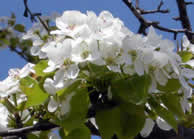 |
|
| Yamanashi (Pyrus pyrifolia) tree is said to be the origin of the word Yamanashi. The tree blows pretty white flowers in the spring. In the garden, about 40,000 trees closely related to the history of Yamanashi are planted. |
|
| |
|
| |
|
|
 Douso-jin Douso-jin |
| |
|
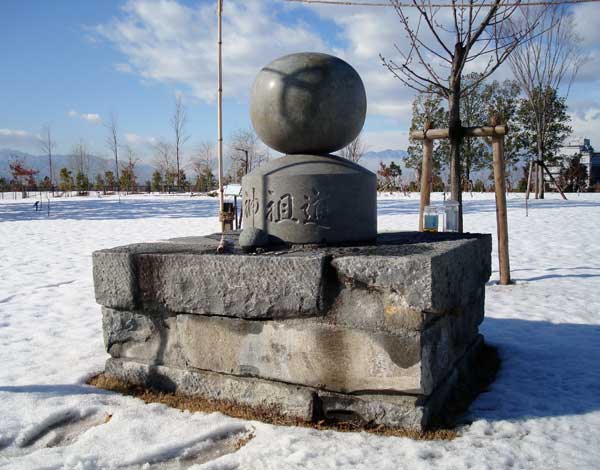 |
|
The Douso-jin, or the Village Boundary God, is a god originally enshrined at town boundaries, the crossroads where streets met, and at mountain passes where they prevented any bad spirits from entering the village. At the same time, they were also considered to be the god for good marriages and the blessing of children. Even to this day, many simple Douso-jin statutes are left all throughout Japan.
This Douso-jin was relocated from Kami-ishida in Kofu City.
|
|
| |
|
| |
|
|
 Grain and vegetable field, Vineyard, and Peach orchard Grain and vegetable field, Vineyard, and Peach orchard |
| |
|
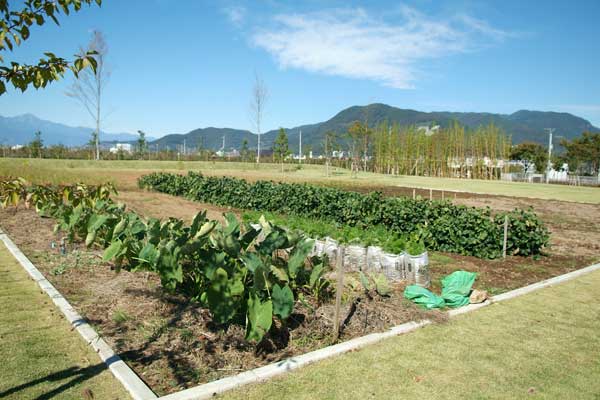 |
|
| Traditional vegetables, Grape and peach varieties associated with Yamanashi are grown |
|
| |
|
| |
|
|

